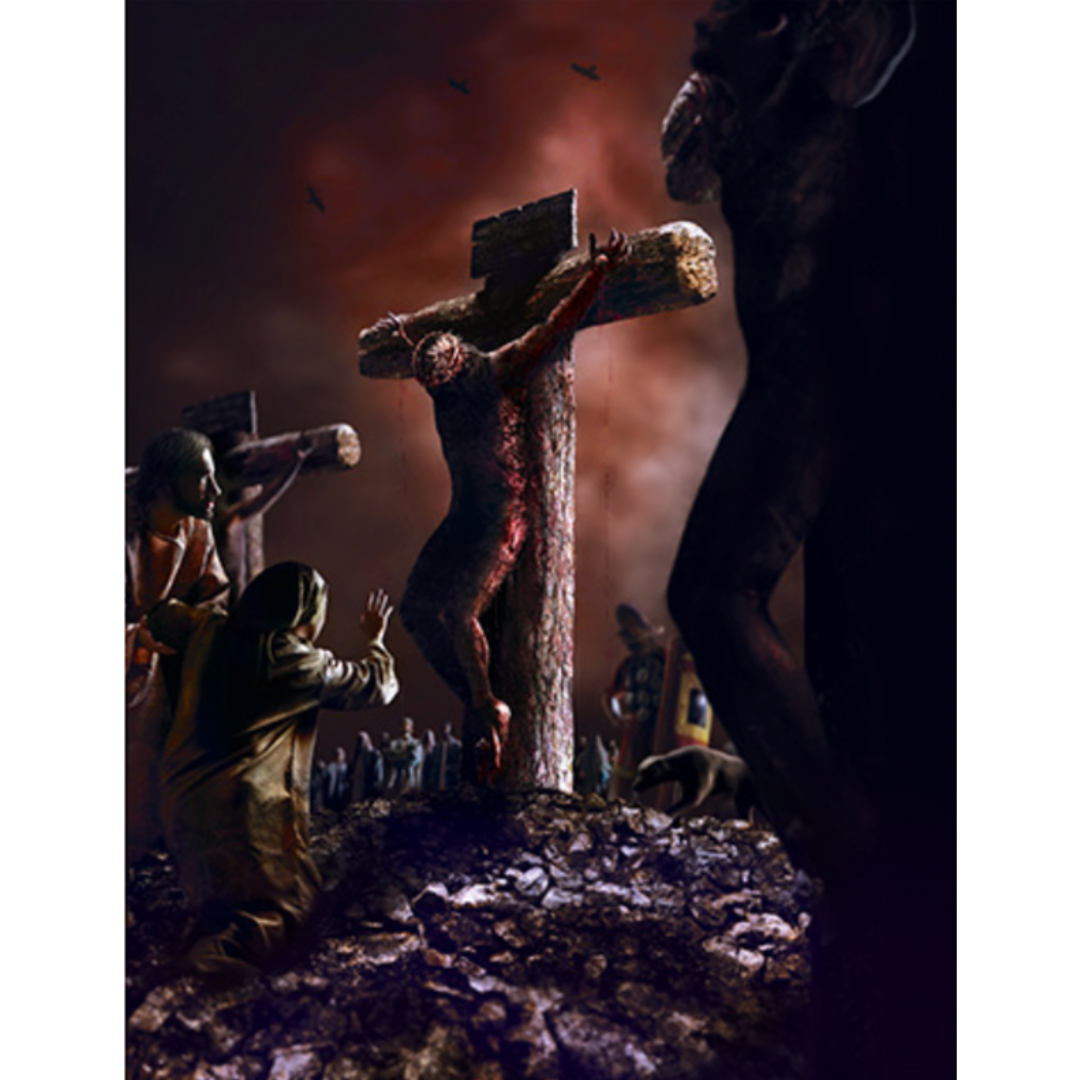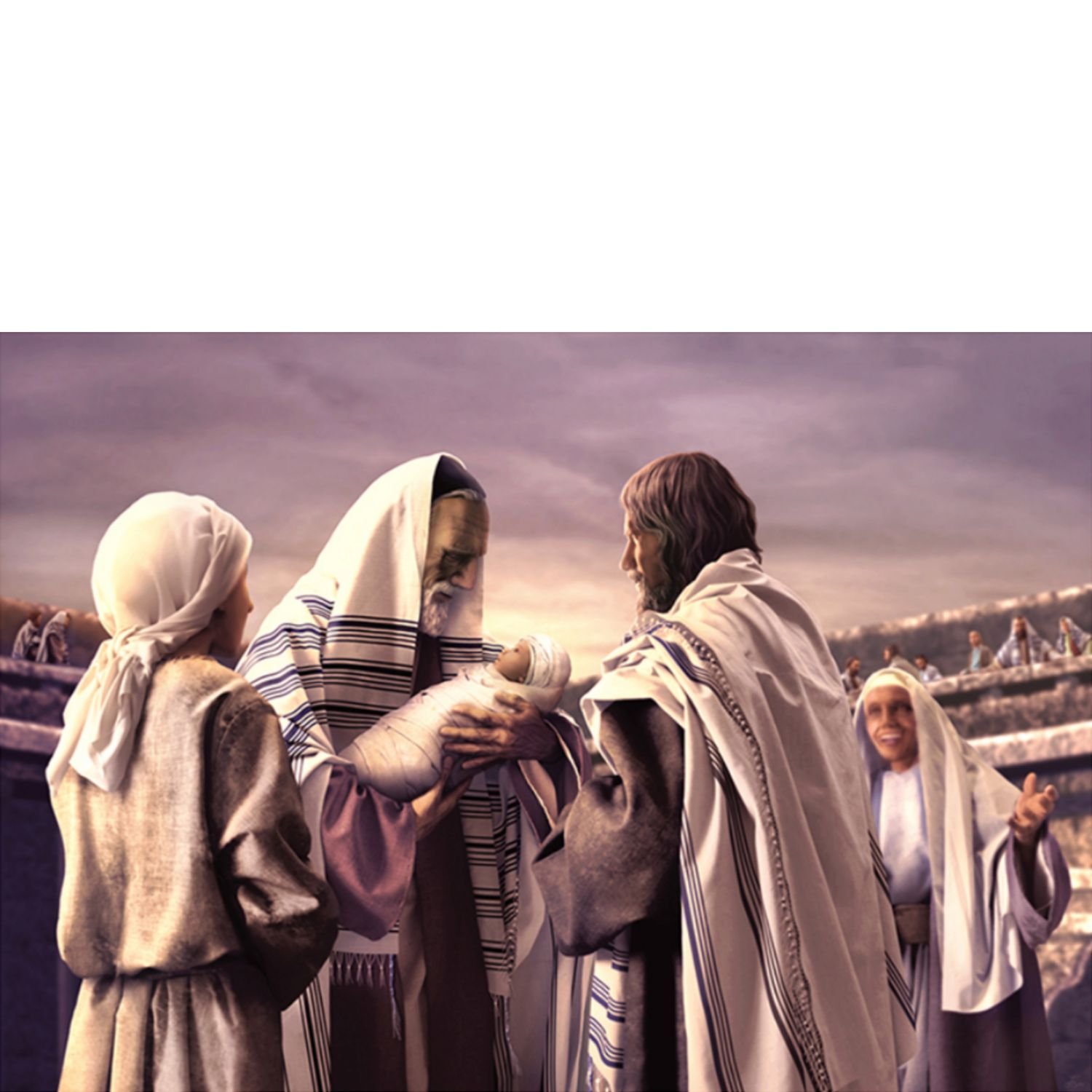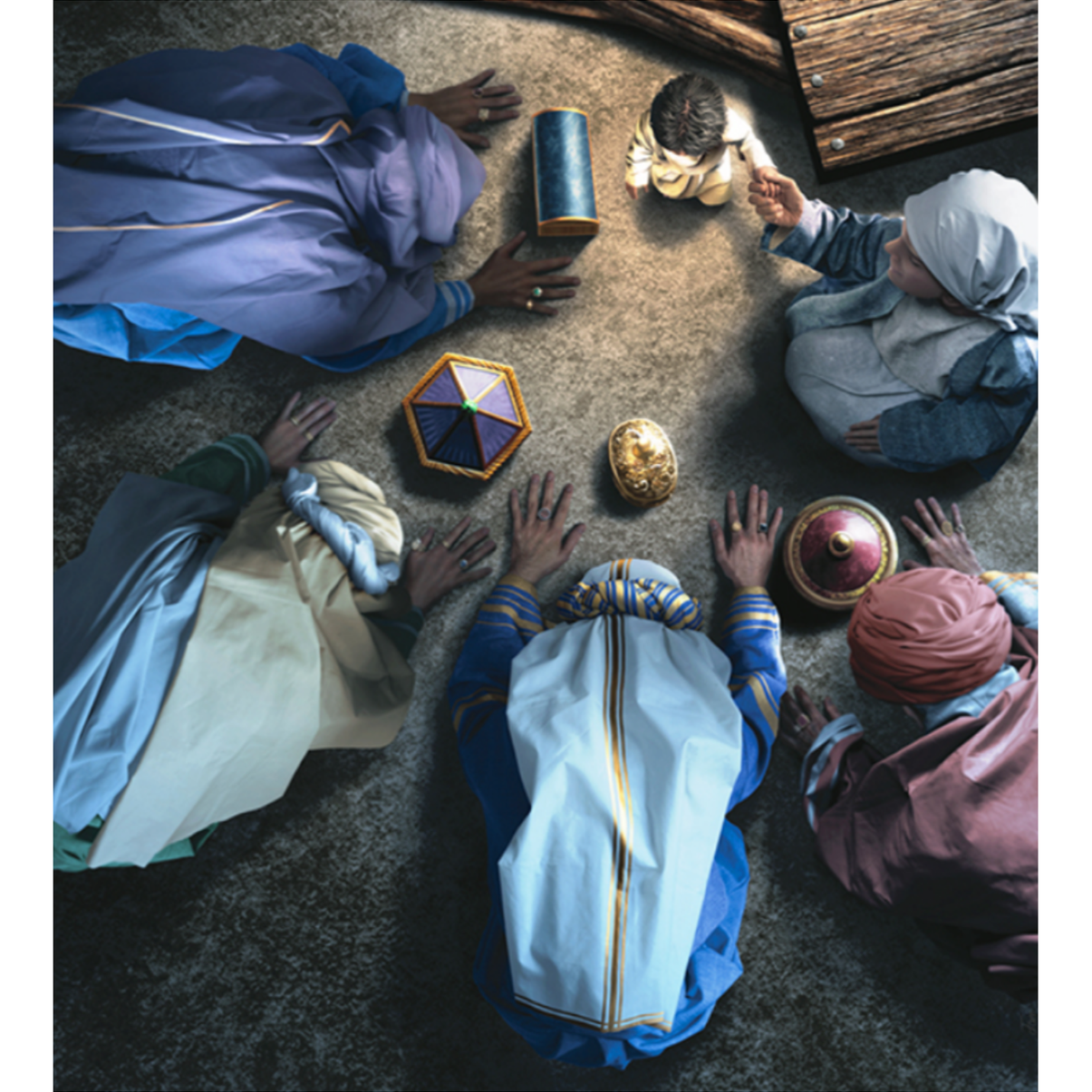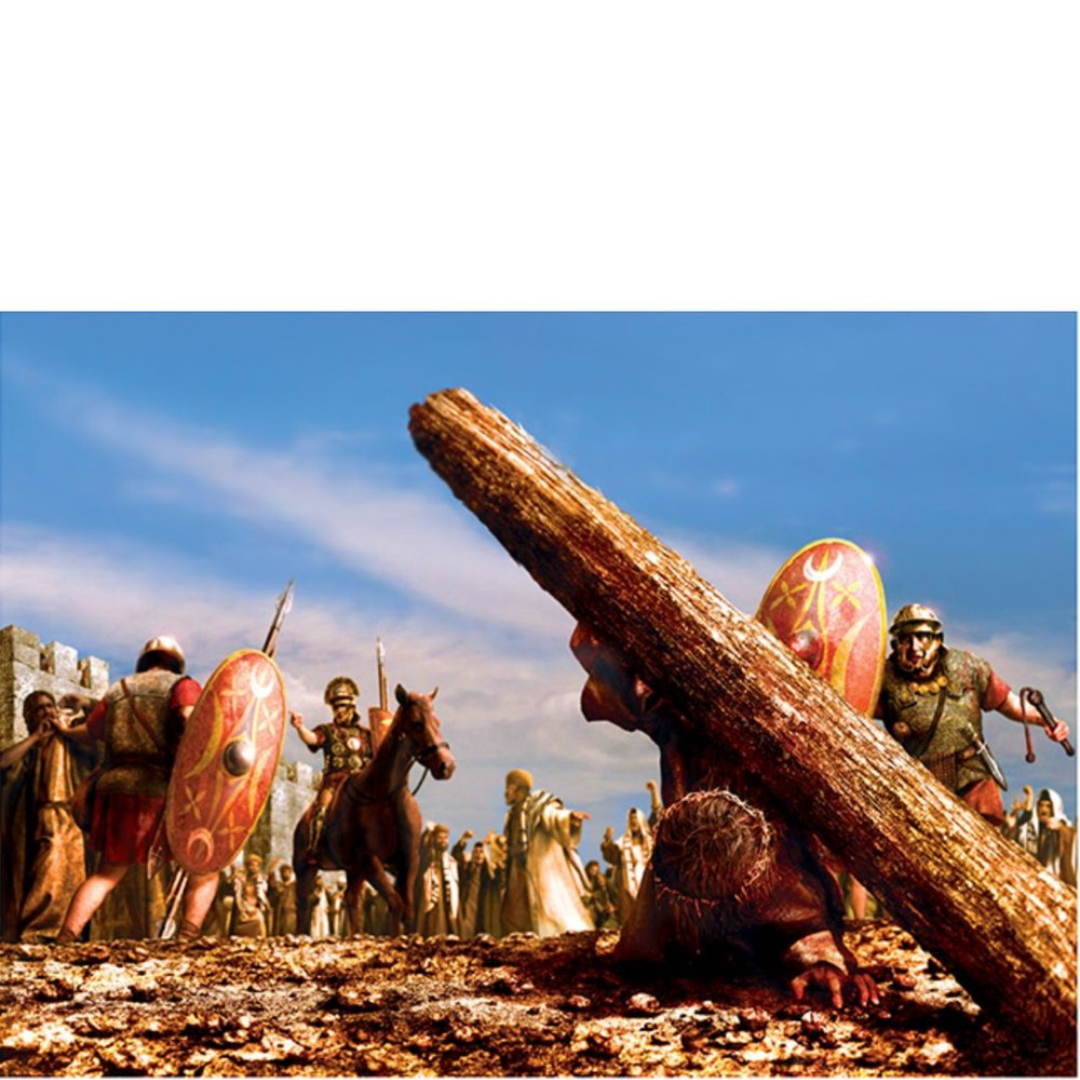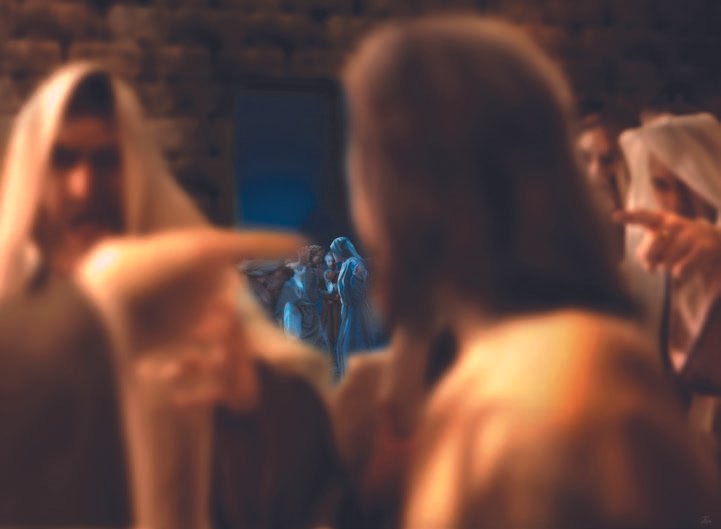Propitiation
DOMINIQUE FAM
Digital Painting (Limited Reproduction, Canvas with Frame)
54 × 80cm
2024
The crosses used for the Romans for crucifixion consisted of two pieces of rough, unfinished wood. The patibulum (crossbeam) and the stipe (upright post). The stipe was fixed to the ground with a horizontal groove near the top. Jesus’ hands were first nailed to the patibulum before the patibulum was inserted into the groove of the stipe. The Romans then nailed His feet to the base of the stipe. Crucifixion leads to death by suffocation and exhaustion, as the victim had to continuously lift himself up by his legs just to take a breath, exacerbating the already terrible wounds on the feet, before His weight slowly pulled him down. This is why the Romans, who wanted the victims to die so that they can take the bodies down before the Sabbath day, broke the legs of the two thieves who were crucified with Jesus. But Jesus’ legs were not broken as He had already died by then, having finished His work of atonement and dismissed His spirit.
DOMINIQUE FAM
Digital Painting (Limited Reproduction, Canvas with Frame)
54 × 80cm
2024
The crosses used for the Romans for crucifixion consisted of two pieces of rough, unfinished wood. The patibulum (crossbeam) and the stipe (upright post). The stipe was fixed to the ground with a horizontal groove near the top. Jesus’ hands were first nailed to the patibulum before the patibulum was inserted into the groove of the stipe. The Romans then nailed His feet to the base of the stipe. Crucifixion leads to death by suffocation and exhaustion, as the victim had to continuously lift himself up by his legs just to take a breath, exacerbating the already terrible wounds on the feet, before His weight slowly pulled him down. This is why the Romans, who wanted the victims to die so that they can take the bodies down before the Sabbath day, broke the legs of the two thieves who were crucified with Jesus. But Jesus’ legs were not broken as He had already died by then, having finished His work of atonement and dismissed His spirit.
DOMINIQUE FAM
Digital Painting (Limited Reproduction, Canvas with Frame)
54 × 80cm
2024
The crosses used for the Romans for crucifixion consisted of two pieces of rough, unfinished wood. The patibulum (crossbeam) and the stipe (upright post). The stipe was fixed to the ground with a horizontal groove near the top. Jesus’ hands were first nailed to the patibulum before the patibulum was inserted into the groove of the stipe. The Romans then nailed His feet to the base of the stipe. Crucifixion leads to death by suffocation and exhaustion, as the victim had to continuously lift himself up by his legs just to take a breath, exacerbating the already terrible wounds on the feet, before His weight slowly pulled him down. This is why the Romans, who wanted the victims to die so that they can take the bodies down before the Sabbath day, broke the legs of the two thieves who were crucified with Jesus. But Jesus’ legs were not broken as He had already died by then, having finished His work of atonement and dismissed His spirit.

